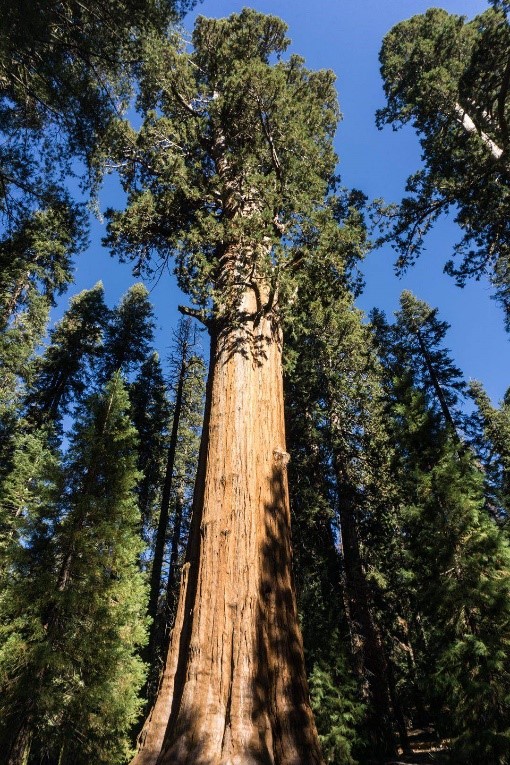
Giant sequoia (Sequoiadendron giganteum) trees, the sole living species in the genus Sequoiadendron, are among the largest trees and the oldest living things on Earth. However, with the global climate change, the current natural distribution of giant sequoia trees is restricted to an area of about 150 km2 on the western slopes of California's Sierra Nevada, USA.
During the past three decades, the Sierra Nevada has experienced both multiyear dry periods that characterize the past millennium and unprecedented rising temperature that drives more extreme droughts, which brings a huge challenge for the local ecosystem.
Therefore, it is of great significance for improve our understanding on the giant sequoia habitat and formulate forest management policy to assess the relative vulnerability of SEGI groves to a warming climate and multi-year dry periods
The research on assessing the relative vulnerability of giant sequoia groves to a warming climate and multi-year dry periods was conducted together by a team from the Institute of Botany of the Chinese Academy of Sciences, Sun Yat-sen University and the University of California, Merced.
The response mechanism of giant sequoia to the warming climate was investigated using 1985–2015 Landsat imagery, climate data, and field measurement data.
Research show that the 2011–2015 drought has brought a significant drop in grove wetness which is five times higher than the normal variance, although there haven't been huge numbers of deaths.
In addition, vegetation greenness and thus forest biomass in groves increased by about 6% over that 30-year period due to the influence of forest thinning, suggesting a 10% increase in evapotranspiration.
This phenomenon reflected the effects of warmer drought-year temperatures on the evaporative demand of current grove vegetation, plus insufficient regolith water storage of rain and snowmelt to sustain that vegetation through seasonal and multiyear dry periods.
Moreover, the researchers analyzed the changes of giant sequoia groves during the 2011–2015 dry period and an earlier dry period (1987–1992). They found that the increasing temperature would increase drought stress on giant sequoia groves.
The Sierra Nevada has a montane Mediterranean climate, and snowmelt stored in the regolith provides the major water source.
The increasing temperature induces earlier snowmelt and can prolong the summer dry periods. Giant sequoia groves at different region responded differently to the drought stress, and the drought stress effect will become stronger in high elevations than lower elevations.
The corresponding results are published in Journal of Geophysical Research-Biogeosciences entitled "Emerging Stress and Relative Resiliency of Giant Sequoia Groves Experiencing Multiyear Dry Periods in a Warming Climate".

Giant sequoia in the Sierra Nevada mountains, California (Image by SU Yanjun)

86-10-68597521 (day)
86-10-68597289 (night)

86-10-68511095 (day)
86-10-68512458 (night)

cas_en@cas.cn

52 Sanlihe Rd., Xicheng District,
Beijing, China (100864)

